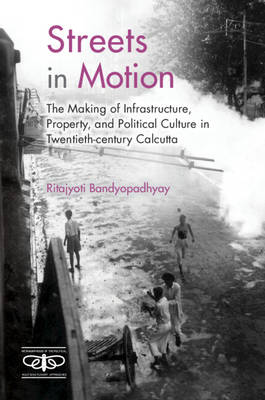
- Afhalen na 1 uur in een winkel met voorraad
- Gratis thuislevering in België vanaf € 30
- Ruim aanbod met 7 miljoen producten
- Afhalen na 1 uur in een winkel met voorraad
- Gratis thuislevering in België vanaf € 30
- Ruim aanbod met 7 miljoen producten
Zoeken
Streets in Motion
The Making of Infrastructure, Property, and Political Culture in Twentieth-Century Calcutta
Ritajyoti Bandyopadhyay
€ 144,45
+ 288 punten
Omschrijving
The book studies the social production of motion in a capitalist urban context. In the city of capital, motion refers to a fetish. The bourgeois order posits motion as a metaphor for energy, positivity, and progress - a norm - and obstruction (motion's dialectical opposite) as delinquency. The book uncovers the social tectonics of spatial mobilization and thus demystifies motion. Who and what set spaces on the move? How did various classes of city dwellers activate, experience, and negotiate it? Streets in Motion develops an approach to urban history by theorizing and historicizing the 'street' as an apparatus of city-making and subject formation. It works at two registers - a local history of Calcutta in colonial and post-colonial periods, and a theorizing of the logistical and political-cultural centrality of the street within this rubric. It is argued that the street is politics in as much as politics is the production of space.
Specificaties
Betrokkenen
- Auteur(s):
- Uitgeverij:
Inhoud
- Aantal bladzijden:
- 320
- Taal:
- Engels
- Reeks:
Eigenschappen
- Productcode (EAN):
- 9781009100113
- Verschijningsdatum:
- 26/01/2023
- Uitvoering:
- Hardcover
- Formaat:
- Genaaid
- Afmetingen:
- 160 mm x 236 mm
- Gewicht:
- 521 g

Alleen bij Standaard Boekhandel
+ 288 punten op je klantenkaart van Standaard Boekhandel
Beoordelingen
We publiceren alleen reviews die voldoen aan de voorwaarden voor reviews. Bekijk onze voorwaarden voor reviews.











